John Hurrell – 7 August, 2024
There is no minimal, understated or ultra-pristine rarefied work here (if you are inclined for such) so you won't discover bare walls, austere placements or shiny super-industrial surfaces with an impeccable finish. Tactile earthy textures, ‘tribal' templates, close ‘neighbourly' crowding, up-front identity politics, garish colour, overt physicality and raw manual traces instead are ubiquitous.
Auckland Tāmaki Makaurau
Emerita Baik, Leo Baldwin-Ramult, Heidi Brickell, Pelenakeke Brown, Jack Hadley, Ruth Ige, Hannah Ireland, Xin Ji, Reece King, Qianye Lin and Qianhe Lin, Te Ara Minhinnick, Ammon Ngakuru, Amit Noy, Sung Hwan Bobby Park, Meg Porteous, Maungarongo (Ron) Te Kawa, Tyrone Te Waa, The Killing (Collective), Anh Trân, Manuha’apai Vaeatangitau, Jahra Wasasala, George Watson
Aotearoa Contemporary
Curated by Cameron Ah Loo-Matamua, Natasha Conland and Ane Tonga with support from Ruth Ha.
6 July - 20 October 2024
Here in Auckland Art Gallery Toi o Tāmaki, twenty-eight young or ‘emerging’ artists present work in a national triennial show that displays lots of wonderful sculpture (though a proportion is also annoyingly infantile and gross), a little performance, a little photography, and some often forgettable painting.
As it is a fairly wide-ranging mixture of an exhibition (after all this is ‘contemporary art’ and so, in our current era, is expected to be diverse), very few visitors will like everything, though it is clearly pitched to a younger audience. (Just how young is up for speculation.) And if you are mature in your years, let’s say over thirty, then much of it might come across as insultingly juvenile. With its chaotic plethora of clashing styles, methods and (at times) kiddie content, it is therefore prudent for each visitor to explore what initially attracts them (if they are so lucky), and in the time taken to do that, they might possibly change their mind about other presentations that they instinctively resist.
There are detectable limitations. There is no minimal, understated or ultra-pristine rarefied work here (if you are inclined for such) so you won’t discover bare walls, austere placements or shiny super-industrial surfaces with an impeccable finish. Tactile earthy textures, tribal templates, close ‘neighbourly’ crowding, up-front identity politics, glittery garish colour, overt physicality and raw manual traces instead are ubiquitous.
Yet within this mix, there are nine art practices I found particularly engaging. About a third of the artists. That is a good ratio. Quite a realistic and positive expectation. Enough to keep most punters happy.
Sung Hwan Bobby Park’s two coloured photographs (BTM Portrait Ding Deng Dong; Sgt Ang) and totemic installation (BTM Ding Deng Dong) feature his elaborate ceramic helmets (with protruding horns or towers, tactile grids of nipples, and tails of horsehair) that allude to his experiences as a South Korean soldier. Three vertical hollow ceramic ‘logs’ bearing white calligraphy, on which the unusual helmets are placed, are balanced on rudimentary altars made of stacked fire bricks. A close inspection reveals that the tubes have painted-on linear faces, camouflage army trousers and Queer signifiers such as suspended ear-rings, a ring-pierced cock, and mannequin hands with red painted nails. There is a nice relaxed gentle humour throughout this installation, that is almost self-mocking, but not quite.
Buckled over, knotted and trussed up as if being tortured, Heidi Brickell’s suspended dried sea weed forms (Ahi and fists with Iro; He Whetūrangi Rāwaho; Tangaroa-Collab on Rākaunui; Whārite Kōpiko) combined with wood and twine, speak of more than lengths of desiccated vegetation originally from the bottom of the sea, for sometimes there is an oblique implication of a stretched-out human body trapped within. Also suggestive of insect or shrimp forms, they seem like a novel variation of ikebana. They also connect around the corner with the wrought iron singeing scrolls of George Watson—being decorative, just as the kelp would be if encountered in approximate spirals fortuitously washed up on the beach.
Emerita Baik’s wall of five smashed up and painted reconstituted aluminium pipe assemblages (Heart of the Prince; Oranges and citron trees; Pearly seafoam into dust; Red streaks in the Sky; Rocks in the Moonlight) is my favourite section in the whole show. Curvaceous with soft grey, pink, and white hues, these broken chunks of freshly organised thin cylinder exude glorious contradictions. Violent and abstract, their lack of logic baffles, yet they are compelling viewing. Duchampian cubism extruded shattered and piecemeal through a mechanised female body.
George Watson’s wrought iron, smithy-manipulated branding irons (Brand I; Brand II) have already been mentioned. They feature a Christian cross mixed with ornate decorative scrolls. Alluding to slavery, they symbolise the ownership of private property such as livestock, as well as the aggressive indoctrination of European religion, and incorporate graphic flourishes of gloating economic advantage. They introduce another meaning too for this particular exhibition: Watson’s staking out of her allotted space imbuing it with irony: an Apple-esque political statement punning on ‘the brand’ and ‘her’ walls. With the two irons on the floor of Watson’s small intimate space, we find three ornate linear motifs burnt into the walls, charcoal smudges glowering in the white.
Jack Hadley’s two modular aluminium tube and redor black plastic joint (light globe-holding) robots (PFS-T; PFS-R) made me wish for more. They seem lonely as a dorky stalky couple, each partner bedecked in a hanging red or blue electrical cord serving as a colourful knobby necklace. Part bedside street-crossing, and part teetering hospital-ward IV stand, their awkward spindliness entertains. Each, a blinking mobile ‘sculptural drawing’ on castors, eagerly waits for the other to reply, silently longing for a more intense and deeper conversation.
Te Ara Minhinnick’s irregular (2:3:2:3:2) grid (Ki Tua o Rehua) of a dozen beautifully coloured cubes of stacked layers of mud from the Waikato River, Tasman Sea and Manukau Harbour inadvertently nod to minimalists like Robert Morris or Sol LeWitt-while specifically referencing Waiuku as place. With their smooth, cracked, and sandy textures, these large imposing lined up blocks speak eloquently of the artist’s intimate knowledge of the natural resources on her Ngaati Te Ata family’s doorstep.
I love the hefty human and animal heads, and occasional torso (Te Wā, Ringaringa, Garage, Hinengaro, Bones, La Fibra, Ngākau and Rākau) made by Tyrone Wahanui Te Waa from dense layers of thread wound, tightly around fabric wrapped around found objects. They are placed on the floor—or else teetering skeletal platforms as if part of a tribal ceremony for the dead. I enjoy their nuanced blurry ‘woven’ colour and its delicate very fine horizontal texture or ‘grain.’ And their sense of weight and reductive simplicity. There is an amazing variation of textures and coloured cut-cloth shapes peeking out in their surfaces. They hint of Giacometti, burial mummies, Easter Island statues, Rudolf Schwarzkogler, and in the gallery context, Dada theatre.
On the walls, in Ruth Ige’s moody paintings, we find long rows of faceless Nigerian women discreetly hidden behind a blue mist (And your words built worlds; Artists, seers, writers, poets, healers…; Yoruba woman (year 2031)), revealing nuanced garment shapes, subtle dark brown colours and varied brusherly textures. They are almost invisible in the ultramarine murk, these voiceless communities. The titles are sardonic, but paradoxically for Europeans, blue as a colour in Africa is not linked symbolically to melancholy, but to femaleness.
Ammon Ngakuru has a painting, Colour Study, that is particularly compelling in its eccentricity, with its curved Dove soap and spindly artichoke stalks that are blended with a backdrop of a white fence. This also features in the raised platform of picket-sections held up by wine bottles in the gallery installation (One Thousand Year Plan (Terroir)) in front, and various allusions to landscape and neighbourhood divisions of real estate. It is weird in a good way. Perhaps the artichokes stand for good health inside the body and the soap a soothing symbol for cleanliness outside, on the surface. And the fence, possibly some kind of coded epidermal barrier between the two?
As you can probably tell, on a personal level there is plenty of work here that gets my dander up (dreadful featherbrained stuff I will ignore) and plenty I am extremely pleased to see and which is a pleasure to think about. It is a busy event that is worth carefully sorting through, plus it has an excellent free tabloid-style newsprint catalogue. I’m looking forward to the next iteration in three years time.
John Hurrell

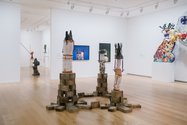

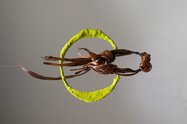
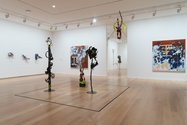
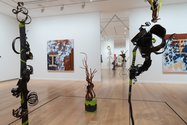
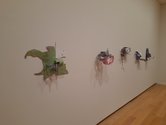
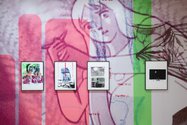
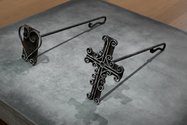

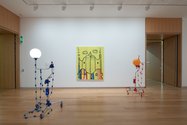

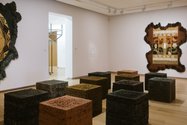
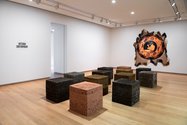
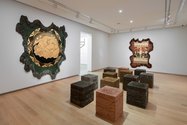
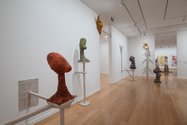

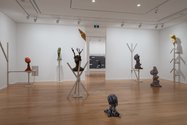
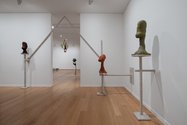

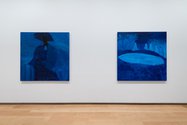
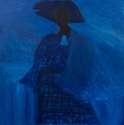
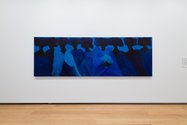
 Advertising in this column
Advertising in this column Two Rooms presents a program of residencies and projects
Two Rooms presents a program of residencies and projects



This Discussion has 0 comments.
Comment
Participate
Register to Participate.
Sign in
Sign in to an existing account.